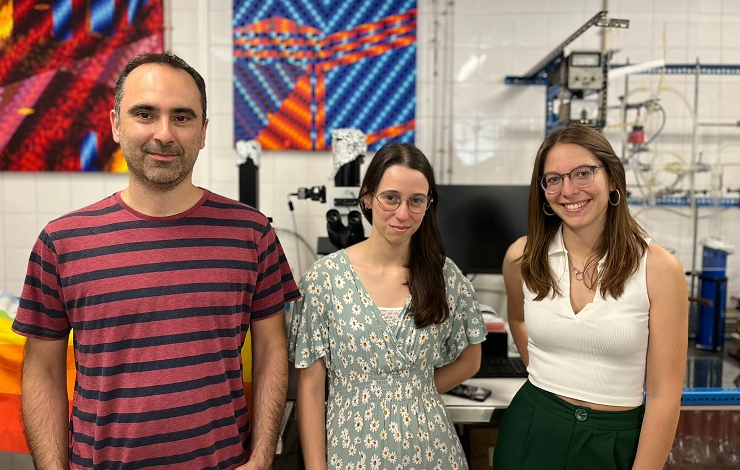20-06-2023

A team of researchers from the NOVA School of Science and Technology | NOVA FCT, Associated Laboratory for Green Chemistry (LAQV), and the University of Santiago de Compostela (Spain), developed a method to transport biomolecules into the cell through light. In short, the researchers have designed a class of photosensitive chemical compounds to trigger the transfer of biomolecules into cells using visible light.
The cell membrane acts as a semi-permeable barrier that regulates the transport of substances between the outside and inside of cells. In addition to preventing the entry of unwanted substances, this biological barrier also provides potentially beneficial compounds, such as drugs, out of cells, preventing them from exerting their therapeutic action.
Unlike most known photosensitive transporters, which control the transportation of small ions across membranes, the researchers developed a new molecular technology to transport much larger and more complex molecules. More specifically, peptides - protein segments made up of amino acids linked together - were transported in this work to demonstrate the proof of concept. However, according to the authors, this technology could be adjusted for the transport of other types of biomolecules, such as messenger RNA, used in COVID-19 vaccines.
The research team was coordinated by Nuno Basílio, researcher at the Associated Laboratory for Green Chemistry (LAQV), and the results of the study were published in the Journal of the American Chemical Society, one of the most prestigious scientific journals dedicated to chemistry.
"The success of the molecular transporters developed by the international team can be attributed to a simple but extremely efficient molecular design that combines in a relatively small molecule two functional units: one that recognises the compounds intended to be transported and another that changes its geometry when exposed to light. This structural alteration amplifies its capacity to pass membranes, making it possible to remote-control this function with visible light," explains Joana Martins, researcher at NOVA FCT.
According to Javier Montenegro, researcher at the University of Santiago de Compostela, the photosensitive molecular vehicles stand out for the possibility of application at remarkably low concentrations and the use of low energy visible light. Most of the present photosensitive systems require the use of ultraviolet light, which besides being much less selective, can degrade biomolecules exposed to this radiation, inducing possible toxic effects.
The authors point out that one of the significant challenges in medicine lies in the possibility to release drugs selectively into diseased cells without affecting healthy ones. Although the molecular transporters developed in this project are still far from a practical application, the results obtained represent a relevant step in this direction, opening new possibilities in the development and optimization of molecular systems for controlled drug delivery.
Press (portuguese):